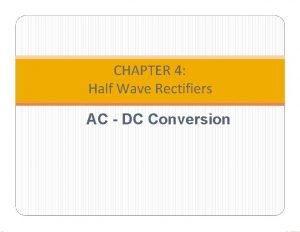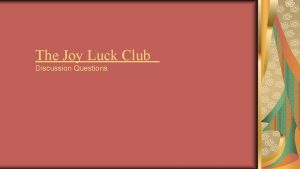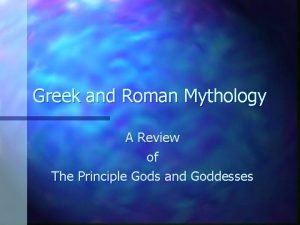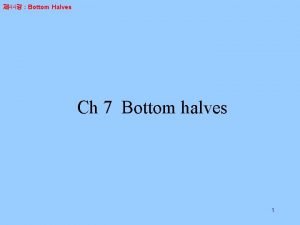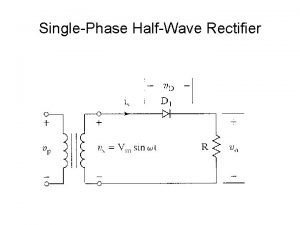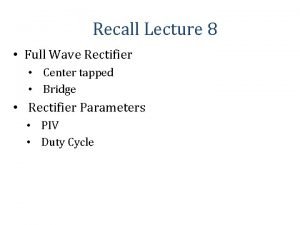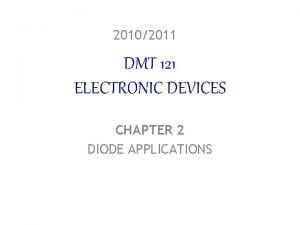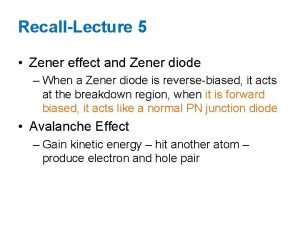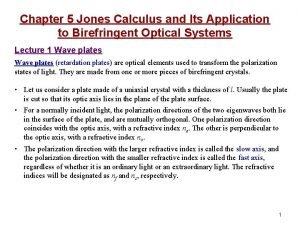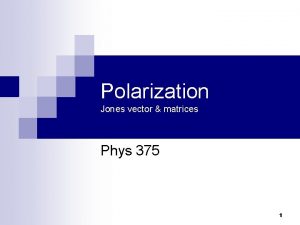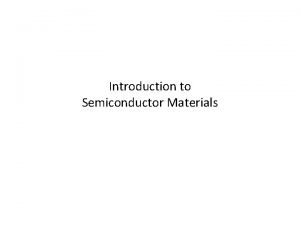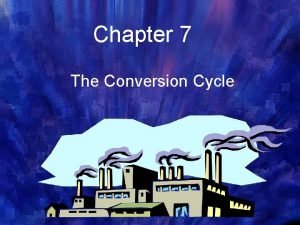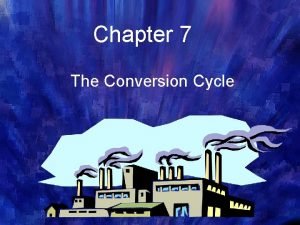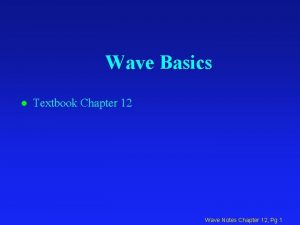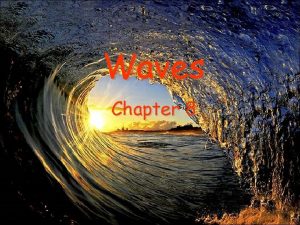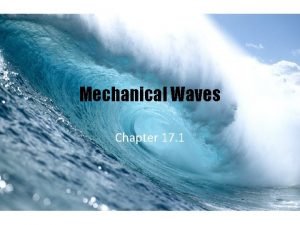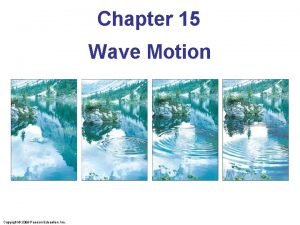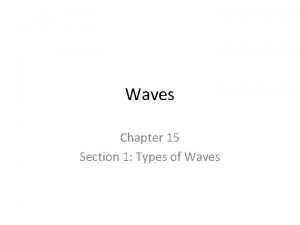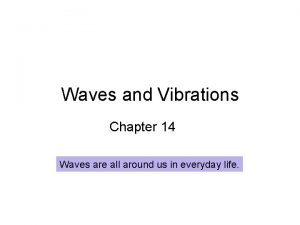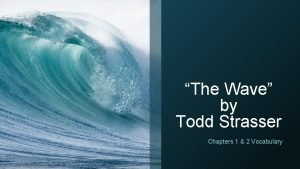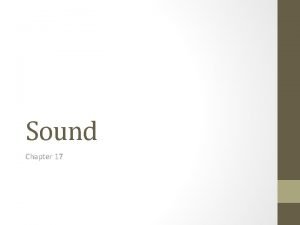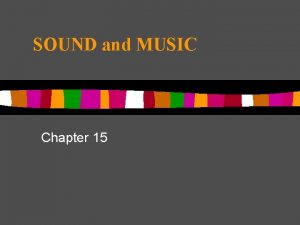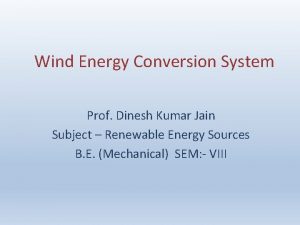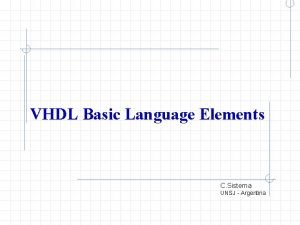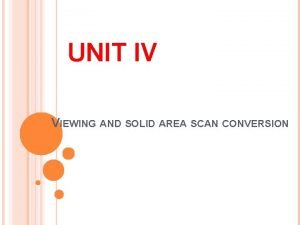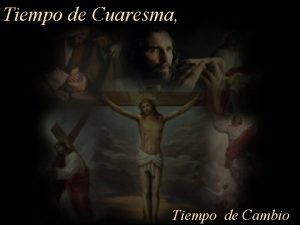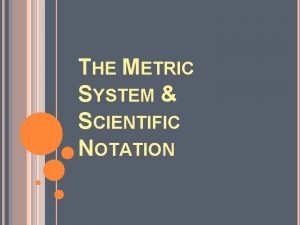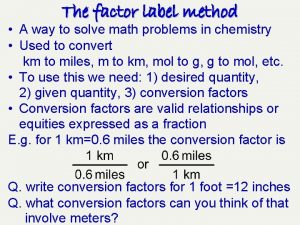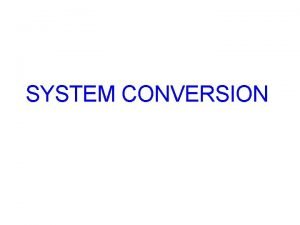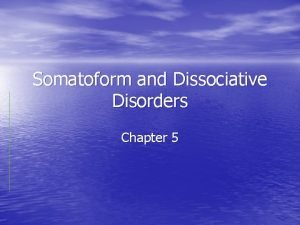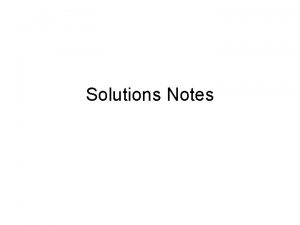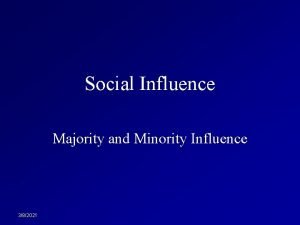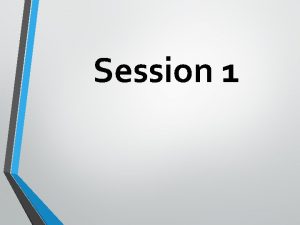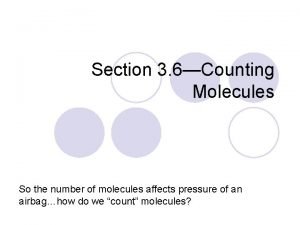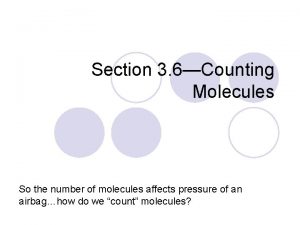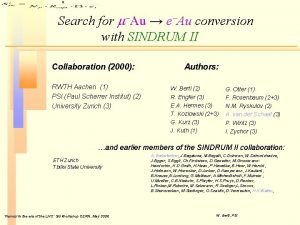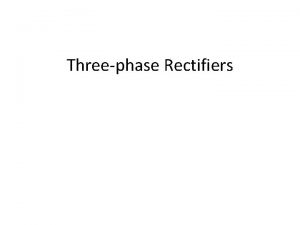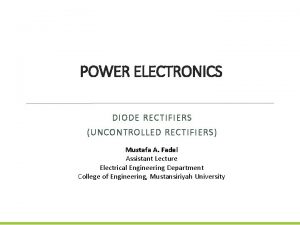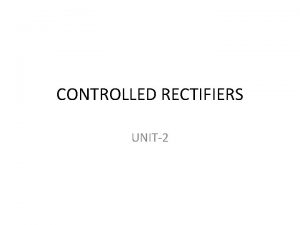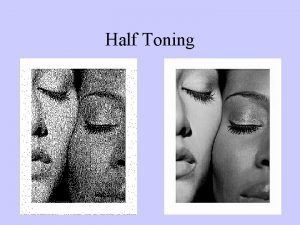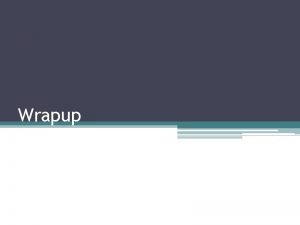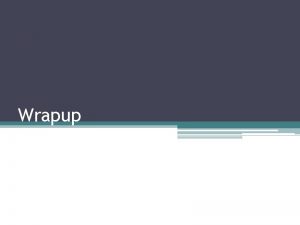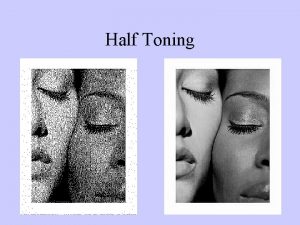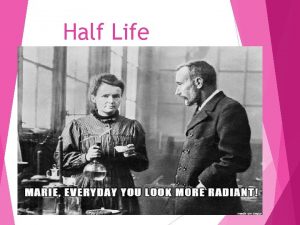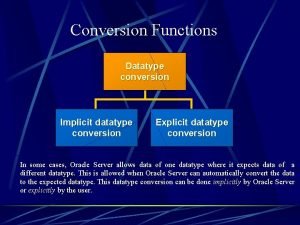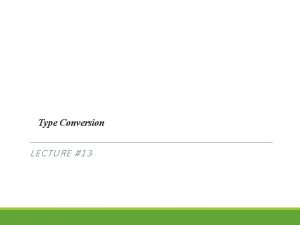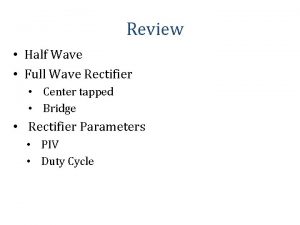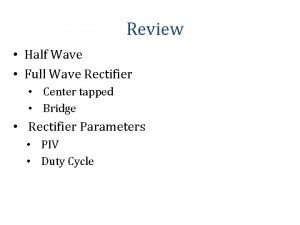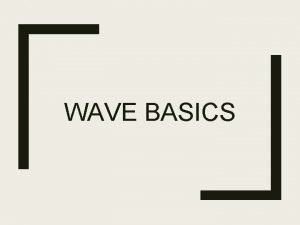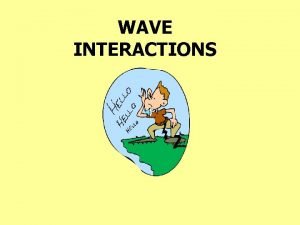CHAPTER 4 Half Wave Rectifiers AC DC Conversion




































































- Slides: 68

CHAPTER 4: Half Wave Rectifiers AC - DC Conversion

AC to DC CONVERSION (RECTIFIER) 1. 2. Single-phase, half wave rectifier a) Uncontrolled : R load, R-L load b) Controlled : R load, R-L load c) Free wheeling diode Single-phase, full wave rectifier a) Uncontrolled: R load, R-L load b) Controlled : R load, R-L load c) Continuous & discontinuous current mode

RECTIFIERS : INTRODUCTION A rectifier converts AC to DC signal. DEFINITION: Converting AC (from mains or other AC source) to DC power by using power diodes or by controlling the firing angles of thyristors / controllable switches. The purpose of a rectifier may be: • to produce an output that is purely dc • to produce a voltage/current waveform that has a specified dc component. ü half wave rectifier normally used in low applications only.

Uncontrolled Half - Wave Rectifier Circuit with R-LOAD

Uncontrolled Half-Wave Rectifier with Resistive Load + vd is D 1 • During the positive half-cycle of input voltage, D 1 conducts and the input voltage appears across the load. • During the negative half - cycle of the input voltage, D 1 is in a blocking condition and the output voltage is zero • The current produces a voltage across the load, which has the same shape as the positive half-cycle the input voltage. • Positive half cycle ⇒ diode is on • Negative half-cycle ⇒ diode is off

v (t) = V p sin(ωt) i(t) = Vp R sin(ωt) VD, ak I Dak (t) I in I out Vin (t) t=0 ⇒ π R Vout I in Vin (t) t= π⇒ 2π R Vout

Uncontrolled Half-Wave Rectifier with Resistive Load …cont. The average value of the output (load) voltage, Vdc or Vo or Vavg is determined by finding the area under the curve over a full cycle. (4. 0) (4. 1)

Uncontrolled Half-Wave Rectifier with Resistive Load …cont. The dc component of the current for the purely resistive load is (4. 2) The root-mean-square (rms) value of the output voltage, Vrms (4. 3) The rms value of the output current, Irms Average power absorbed by the resistor can be computed from

Uncontrolled Half - Wave Rectifier Circuit with RL-LOAD

RESISTIVE-INDUCTIVE LOAD � As the source voltage is positive in the circuit, the diode will be forward biased. After the diode turns off (reverse biased), the current continue to flow because of the energy storage into the inductor, which force the diode to turn on again and continue to be on until the current � becomes zero. voltage law The Kirchhoff equation that describes the current in the circuit in this case is �

The solution can be obtained by expressing the current � as the sum of the forced response and the natural response. � The forced response for this circuit is the current that exists after the natural response has decayed to zero.

� The natural response is when the right hand side of Kirchoff equation is equal to zero. Ri(t )+ L � di (t ) =0 dt The solution of the first order differential equation Where τ is time constant L/R and A is a constant that is determined from the initial condition (A is the current value at t=0). Thus � The initial condition of current in the inductor is zero because it was zero before diode started conducting and it cannot change instantaneously.

Using the initial condition, A can be obtained Thus o r

� � � This equation is valid for positive current only because of the diode in the circuit, so current is zero when the function in the equation is negative. Note that the diode remains forward-biased longer than π rad although the source is negative during this duration due to the inductor. The point when the current reaches zero is when the diode turns off. This point called the extinction angle β (β=ωt). Which reduce to β can only be solved numerically Therefore, the diode conducts between 0 and β.

� The average power absorbed by the load is I 2 rms R since the average power absorbed by the inductor is zero The average current is β I o= 1 i (ω t )d (ω t ) ∫ 2π 0

� Example 3 -2 For the half-wave rectifier RL load circuit, R = 100 Ω , L = 0. 1 H, ω = 377 rad/s, and Vm= 100 V and β= 3. 50 rad. determine (a) an expression for the current in this circuit, i(t) (b) the average current, Io (c) the rms current, Irms (d) the power absorbed by the RL load, (e) power factor, p

Uncontrolled Half-Wave Rectifier with Resistive- INDUCTIVE Load

The Half-wave Controlled Rectifier Normal rectifiers are considered as uncontrolled rectifiers. Once the source and load parameters are established, the dc level of the output and power transferred to the load are fixed quantities. A way to control the output is to use SCR instead of diode. Two condition must be met before SCR can conduct: 1. The SCR must be forward biased (VSCR>0) 2. Current must be applied to the gate of SCR

The simplest controlled rectifier uses a single device, such as a thyristor, to produce variable voltage D. C. from fixed voltage A. C. mains. The circuit arrangement is shown below

Voltage waveforms for two delay angles are shown below: The thyristor is turned on in the positive half-cycle, some time after supply voltage zero, by the application of a gate pulse with delay angle α. In the negative halfcycle, the thyristor is reverse biased and cannot switch on. The larger the delay angle, the smaller is the average load voltage.

HALF - WAVE CONTROLLED RECTIFIER CIRCUIT WITH R-LOAD

Average voltage: RMS current: Average power absorbed by resistor:


Example 1: Design a circuit to produce an average voltage of 40 V across 100Ω load resistor from a 120 Vrms 60 Hz ac sour Determine the power absorbed by the resistor. Briefly describe what happen if the circuit is replaced by diode to produce the same average output.

Half - Wave Controlled Rectifier Circuit with RL-LOAD

When ωt=π, the source becomes zero, but at this instant, the current through the circuit is not zero and there is some energy stored in the inductor. Let Vs(t) be Vm sin (wt). At ωt=0, the current through the circuit is zero. As wt becomes > 0, Vs becomes positive. If a diode instead of an SCR has been used, the diode would start conduction at ωt = 0. With an SCR, the conduction does not start till the SCR is triggered. Let the SCR be triggered when ωt=α. Then α is called the firing angle and the SCR continues to conduct. When Vs becomes negative, the current through the circuit would not become zero suddenly because of the inductor. The inductor acts as a source and keeps the SCR forward-biased till the energy stored in the inductor becomes zero. Let the current through the circuit become zero at ωt= and the value of β > π. For β< ωt < 2π, the current through the circuit is zero

RL LOAD During positive half cycle, anode is connected to the positive terminal of the supply and the cathode is connected to negative terminal of supply and the thyristor is forward � When the thyristor is fired at biased. a firing angle (α), the load current will increase in a finite-time through the inductive load. The supply voltage from this instant appears across the load. � Due to inductive load, the increase in current is gradual. Energy is stored in inductor between α and π. �

� At π, the supply voltage reverses, but the thyristor is kept conducting because current through the inductance cannot be reduced to zero. During negative half cycle, anode is connected to the negative terminal of the supply and the cathode is connected to positive terminal of supply and the thyristor is reverse biased. � Current continues to flow till the energy stored in the inductance is dissipated in the load-resistor and a part of the energy is fed- back to the source. � Hence due to energy stored in the inductor, current continues to flow up to angle β. At angle β, the loadcurrent is zero and due to negative supply voltage, thyristor turns-off. � Hence the effect of inductive load is increased in the conduction period of SCR. �

� � � The analysis of this circuit is similar to that of the uncontrolled RL load rectifier. The current is the sum of the forced and natural responses. The constant A is determined from the initial condition i(α) = 0

� The extinction angle β is the angle at which the current returns to zero (ωt = β) The angle β – α is called the conduction angle γ � Average (dc) output voltage is � The average current is computed from

� The power absorbed by the load is I 2 rms R Example 3 -11: A half wave rectifier has a source of 120 V RMS at 60 Hz. R = 20 Ω, L = 0. 04 H, and the delay angle is 45 degrees. Determine: (a) the expression for i(ωt), (b) average current, (c) the power absorbed by the load, (d) the power factor.

Example 2: A half wave rectifier has a source of 120 V RMS at 60 Hz. R=20 ohm, L=0. 04 H, and the delay angle is 45 degrees. Determine: (a) the expression for i(ωt), (b) average current, (c) the power absorbed by the load. (b) 2. 19 A (c) 213 W

THE FREEWHEELING DIODE Note that for single phase, half wave rectifier with RL load, the load (output) current is not continuous→ bad current. Therefore, freewheeling diode can be placed to make it continuous. � The two diodes cannot be forward-biased at the same � � time. Diode D 1 will be on when the source is positive, and diode D 2 will be on when the source is negative.

● For positive source voltage, ● D is on. 1 ● D is off. 2 ● ● ● The equivalent circuit is as shown in figure (b). The voltage across the RL load is the same as the source. For negative source voltage, ● D is off. 1 ● D is on. 2 ● ● The equivalent circuit is as shown in figure (c). The voltage across the RL load is zero.

The inductor contains energy from positive cycle. The load current still circulates through the R-L path. But, in contrast with normal half wave rectifier, the circuit in figure (c) does not consist supply voltage in its loop. Hence the “negative part” of Vo as shown in the normal half wave (disappear) ● ● The conclusion of FWD result is a continuous current → good current (almost DC current due to large inductance)

� The output voltage is the same as half-wave rectified since the voltage across the diode D 1 is zero � The current here is continues not like previous RL circuit current, since the current appear only on positive half cycle and discontinues elsewhere, therefore, the current here is represented by Fourier series where, � Zn= √R 2+(n ω L) 2 The Fourier series for the half-wave rectified sine wave for the voltage across the load is

so, � L>>>R, thus no AC term of Fourier series, it will only have the DC term Vm Io = πR

CHAPTER 4 - cont: Full Wave Rectifiers AC - DC Conversion

Why Single Phase Full-Wave Rectifier? ü To produce purely DC supply (less ripple) voltage or current. ü Suitable for high power application. ü Average current in the AC source is zero, thus avoiding problem associated with non-zero average source current especially in transformer. Center- Tapped Single Phase Full. Wave Rectifier Full Bridge

Full-Wave Rectifier Full Bridge Center-Tapped • Center–Tapped (CT) requires center-tapped transformer. Full bridge (FB) does not. • CT 2 diodes • FB 4 diodes • Hence, CT experienced only one diode voltage drop per half -cycle. • Conduction losses for CT is half. • Diodes ratings for CT is twice the FB.

Resultant output waveform

Full-Wave Rectifier Center-Tapped Full Bridge

Full-Wave Rectifier or Full Bridge Voltages & currents

Full-Wave Rectifier

Full-Wave Rectifier with RL Load positive half - cycle negative half - cycle

Full-Wave Rectifier with RL Load

Full-Wave Rectifier with RL Load : transient & steady state - When the circuit is 1 st energized, the load current is zero & cannot change instantaneously. - The current reach periodic steady state after a few period (depends on τ =L/R) Current at the end =current at the beginning

Full-Wave Rectifier with RL Load How to analyze? ? !

Full-Wave Rectifier with RL Load

Full-Wave Rectifier with RL Load rms

Full-Wave Rectifier: RL Load Approximation

Full-Wave Rectifier: RL Load Example

Controlled Full-Wave Rectifier: Resistive Load

Controlled Full-Wave Rectifier

Controlled Full-Wave Rectifier : Discontinuous Mode To improve Vo, insert Free Wheeling diode across the load.

Controlled Full-Wave Rectifier : Discontinuous Mode The analysis is similar to controlled half wave with RL load

Controlled Full-Wave Rectifier : Discontinuous Mode

Controlled Full-Wave Rectifier : Continuous Mode

Controlled Full-Wave Rectifier : Continuous Mode

Controlled Full-Wave Rectifier : Continuous Mode Waveform for continuous RL load (L>>R)

Controlled Full-Wave Rectifier : Continuous Mode Waveform for continuous RL load (L>>R) effect of inserting FWD negative parts are gone (with FWD)

Full-Wave Rectifier: Single Phase Diode Group

Full-Wave Rectifier: Three Phase Diode Group

Full-Wave Rectifier: Three Phase Diode Group

Full-Wave Rectifier: Three Phase Diode Group

Three Phase: Average Voltage Note that the output DC voltage component of a three – phase rectifier is much higher than of a single – phase.

END OF CHAPTER 4

FORMULA LIST
 Single phase rectifier with r load
Single phase rectifier with r load Difference between full wave and half wave rectifier
Difference between full wave and half wave rectifier Define half wave rectifier
Define half wave rectifier Full wave rectification
Full wave rectification The joy luck club questions
The joy luck club questions Extra coronal retainer
Extra coronal retainer Mythological creature half man half horse
Mythological creature half man half horse What is a half horse half man called
What is a half horse half man called Half woman half snake greek mythology
Half woman half snake greek mythology Norse mythology centaur
Norse mythology centaur Mulciber roman god
Mulciber roman god Modified t clasp rpd
Modified t clasp rpd Top half vs bottom half
Top half vs bottom half Narnia half mens half geit
Narnia half mens half geit Half empty or half full
Half empty or half full Gerald croft
Gerald croft Performance parameters of half wave rectifier
Performance parameters of half wave rectifier Formula of vrms in half wave rectifier
Formula of vrms in half wave rectifier Quarter-wave symmetry
Quarter-wave symmetry Half wave rectifier vrms
Half wave rectifier vrms Peak inverse voltage
Peak inverse voltage Zener diode
Zener diode Half wave plate jones matrix
Half wave plate jones matrix D'arsonval meter movement used with half-wave rectification
D'arsonval meter movement used with half-wave rectification Quarter wave plate jones matrix
Quarter wave plate jones matrix Atomic structure of conductor
Atomic structure of conductor Transverse wave vs longitudinal wave
Transverse wave vs longitudinal wave Short wave vs long wave radiation
Short wave vs long wave radiation Longitudinal vs transverse waves
Longitudinal vs transverse waves P and s wave chart
P and s wave chart Rectified sine wave fourier series
Rectified sine wave fourier series Nature of sound wave
Nature of sound wave The wave chapter 10
The wave chapter 10 Mechanical waves vs electromagnetic waves venn diagram
Mechanical waves vs electromagnetic waves venn diagram A matter in which waves can travel and transfer energy
A matter in which waves can travel and transfer energy Transverse wave and longitudinal wave example
Transverse wave and longitudinal wave example Chapter 7 the conversion cycle
Chapter 7 the conversion cycle Chapter 7 the conversion cycle
Chapter 7 the conversion cycle Wave by eric walters
Wave by eric walters The wave chapter 12
The wave chapter 12 Characteristics of a longitudinal wave
Characteristics of a longitudinal wave The wave chapter 8
The wave chapter 8 The wave chapter 17
The wave chapter 17 The wave chapter 15 summary
The wave chapter 15 summary Chapter 15 section 1 types of waves answers
Chapter 15 section 1 types of waves answers Chapter 14 vibrations and waves answers
Chapter 14 vibrations and waves answers The wave chapters
The wave chapters The wave chapter 17
The wave chapter 17 The wave chapter 15 summary
The wave chapter 15 summary The wave chapter 17
The wave chapter 17 Classification of winds
Classification of winds Va chart
Va chart Vhdl type conversion
Vhdl type conversion What is solid area scan conversion
What is solid area scan conversion Feliz dia de cuaresma
Feliz dia de cuaresma No of moles formula
No of moles formula What is the ladder method in science
What is the ladder method in science Factor label method
Factor label method Pilot conversion advantages and disadvantages
Pilot conversion advantages and disadvantages Sap conversion exit
Sap conversion exit Dissociative conversion disorder
Dissociative conversion disorder Ph poh conversion chart
Ph poh conversion chart Conversion social influence example
Conversion social influence example Metric system ruler
Metric system ruler Moles to formula units
Moles to formula units Moles conversion chart
Moles conversion chart Michael faraday
Michael faraday Mau to au conversion
Mau to au conversion Methylphenidate mechanism
Methylphenidate mechanism
